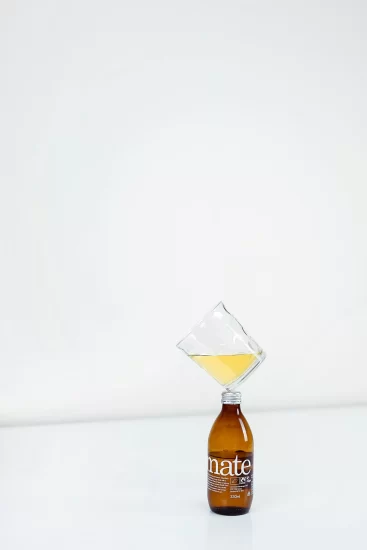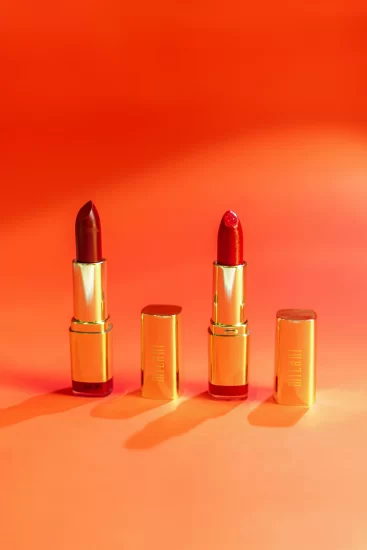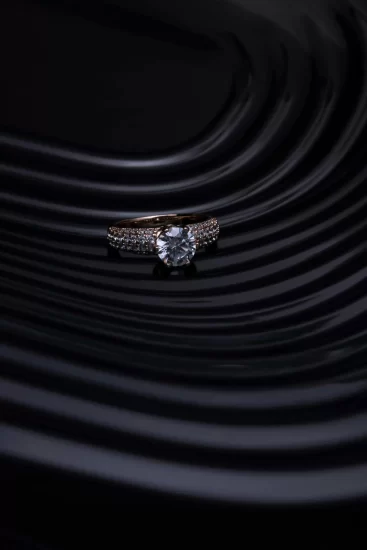Keep your Canon lenses spotless with this all-in-one kit — includes brush pen, air blower, and microfiber cloths.
👉 Check it out on Amazon
In a world where camera technology is evolving at lightning speed, it's easy to feel left behind if you’re not shooting with the latest mirrorless model. But great product photography isn't about chasing trends—it’s about mastering light, composition, and consistency. In fact, many older DSLR setups can still deliver stunning, high-converting images.
Whether you're a small business owner, a side hustler, or a content creator, this guide is here to show you how to get professional results with affordable, reliable gear. We'll focus on the Canon EOS 5D with a 50mm lens and introduce a comparable Nikon setup as well. From camera settings and lighting to editing tips, you’ll walk away with practical steps to create eye-catching images—without breaking the bank.
I. Why Product Photography Still Matters in 2025
In today’s visual economy, your product images are your storefront. Shoppers want to see what they’re buying—clearly, confidently, and in detail. Consider this:
- 75% of online shoppers say product images directly influence their purchasing decisions
- Listings with multiple, high-quality images see up to 30% higher conversion rates
- Clear product images help reduce returns by aligning customer expectations
And with the rise of AI-generated and heavily edited content, authentic product photography—created by real people—stands out more than ever.
II. Who Needs Product Photography?
Product photography is the art of making an item look appealing, functional, and real. It visually answers your customer’s questions:
What does it look like? What’s it made of? How big is it?
Common shot types include:
- Studio shots (clean background)
- Lifestyle shots (in-use scenes)
- Detail shots (textures, features)
- Scale shots (size comparison)
- Packaging and branding shots
Your goal is to reduce friction in the buyer’s journey—answering questions before they’re asked.
III. What Is Product Photography, Really?
Product photography is the art and science of visually showcasing a product's features, design, and use. There are a few standard types:
- Studio shots: Simple, clean backgrounds for marketplaces
- Lifestyle shots: Products in real-world settings
- Detail shots: Highlighting textures, features, craftsmanship
- Scale shots: Showing actual size, often next to familiar objects
- Packaging shots: Unboxing experiences, branding, and presentation
Ultimately, a great product photo answers your customer’s unspoken questions:
What does it look like?
How big is it?
How will it fit into my life?
IV. Why the Canon 5D Still Holds Up
Despite being a DSLR in a mirrorless-dominated landscape, the Canon 5D series remains a powerhouse in product photography. Here's why it continues to shine:
- Full-frame sensor: Better dynamic range, low-light performance, and creamy gradients
- Accurate colors and tonal depth: Crucial for showing true-to-life product hues
- Manual control: Precision over exposure settings lets you fine-tune every shot
- Durability: These cameras were built like tanks—and still perform like champs
Even older models like the 5D Mark II paired with good lighting can deliver images that rival much newer cameras.
V. The 50mm f/1.8: Budget-Friendly Brilliance
Don’t let its price tag fool you—the "nifty fifty" is a workhorse lens for product photography, especially on a full-frame body like the Canon 5D.
- True-to-life perspective: Minimal distortion, natural look
- Aperture flexibility: Use wide for blur, or stop down (f/5.6–f/8) for edge-to-edge sharpness
- Close focus: Great for tabletop setups and detailed shots
- Lightweight and affordable: Incredible value for the results it produces
Together, this combo can handle anything from cosmetics to electronics without breaking a sweat—or your budget.

VI. What About Nikon? A Comparable Setup That Delivers
If you’re a Nikon shooter, there’s great news: you don’t need to switch systems. The Nikon D700, D610, or D750 paired with the Nikon 50mm f/1.8G is every bit as capable as the Canon combo.
- The D700 offers a full-frame sensor and excellent color science
- The 50mm f/1.8G lens is fast, sharp, and accurate
- These bodies also support full manual control and shoot clean files up to ISO 1600 and beyond
Both Canon and Nikon options are widely available on the used market, offering unbeatable value.
VII. Basic Product Photography Lighting Setup (Described)
You don’t need fancy strobes. A window, a softbox, and a foam board can work wonders.
- Place the light (window or softbox) at a 45° angle to your subject
- Use a bounce card opposite the light to soften shadows
- Place the product on a seamless white background or cloth sweep
- Mount your camera on a tripod for consistency and clarity
Even a simple setup like this can produce magazine-quality shots with the right care.
VIII. Suggested Product Photo Camera Settings
Start with these basics:
- Aperture: f/5.6–f/8 for sharpness across the frame
- ISO: 100 or 200 for clean files
- Shutter Speed: Adjust based on lighting (use a tripod)
- White Balance: Manual/custom with a gray card
- Focus: Live View + Manual Focus for total control
Always shoot RAW so you have full editing flexibility later.
IX. Understanding The Depth of Field
Depth of field (DOF) refers to how much of the image appears sharp.
- Shallow DOF (e.g. f/1.8) blurs the background, drawing attention to the subject.
- Deep DOF (e.g. f/8) keeps more of the scene in focus—ideal for larger items or flat lays.
For product photography, the sweet spot is usually f/5.6 to f/8—plenty of sharpness, yet still enough subject separation to look professional.
X. A Simple Lighting Setup That Works
You don’t need fancy strobes. A window, a softbox, and a foam board can work wonders.
- Place the light (window or softbox) at a 45° angle to your subject
- Use a bounce card opposite the light to soften shadows
- Place the product on a seamless white background or cloth sweep
- Mount your camera on a tripod for consistency and clarity
Even a simple setup like this can produce magazine-quality shots with the right care.
XI. Tips for a Clean, Professional Setup
- Use a tripod to eliminate blur and keep framing consistent
- Wipe products clean to avoid dust or fingerprints
- Stick with neutral backgrounds unless you’re doing lifestyle shots
- Avoid mixing light sources (e.g. daylight + tungsten bulbs)
Details matter. One tiny smudge can undo the effort of a perfect composition.
XI. Editing is where your photos go from good to great. Use tools like Lightroom, Capture One, or even Canon's DPP to polish your images.
Here’s a simple workflow:
- Crop and straighten to frame your subject
- Adjust white balance for color accuracy
- Refine exposure and contrast to make the product pop
- Clean up dust or imperfections using healing tools
- Export as JPEG in sRGB color space for web use
Just don’t go overboard—customers want to see the real product.
XII. Why Mirrorless Isn’t Always Better
Mirrorless cameras get the buzz, but DSLRs like the 5D still offer major advantages for static studio work:
- Real-time optical viewfinder (no lag)
- Longer battery life—perfect for long shoots
- Better deals on gear—especially secondhand
- No overheating issues during extended sessions
For product photography, there’s little the average mirrorless can do that a well-set-up DSLR can’t.
XIII. Real-World Product Photography Use Cases
Here are a few ways you can get pro-level results with this combo:
- Jewelry: Side lighting + f/8 for sharp details and sparkle
- Cosmetics: Highlight texture with soft shadows
- Books and prints: Flat lays with edge-to-edge sharpness at f/7.1
- Tech gadgets: Use bounce cards to control glare on shiny surfaces
Versatility is the name of the game.

XIV. Avoid These Common Mistakes
- Shooting too wide open (f/1.8) and losing depth of focus
- Mixing color temperatures (natural and warm bulbs)
- Ignoring dust or fingerprints on the product
- Over-editing (especially clarity and saturation)
- Forgetting to clean your lens or sensor
- The cleaner and more accurate your image, the better it will perform.
Remember, your goal is to showcase—not exaggerate—the product.
XV. Editing and Post-Processing
Great editing doesn’t mean heavy editing. Your goal is accuracy and appeal.
Use Lightroom, Capture One, or similar to:
- Straighten and crop
- Adjust exposure and contrast
- Fine-tune white balance
- Remove dust or blemishes
- Export in sRGB JPEG format for the web
Avoid filters that dramatically alter colors—customers expect what they see.
XVI. Product Photography - Final Thoughts
The best product photography doesn’t require the newest camera. What matters most is lighting, setup, consistency, and knowing your gear. Whether you’re using a Canon 5D, a Nikon D700, or something even older—if it has a decent sensor and a sharp lens, you’re in business.
So stop waiting on the perfect gear. Use what you have, learn as you go, and create visuals that tell the story of your product with clarity and confidence.
